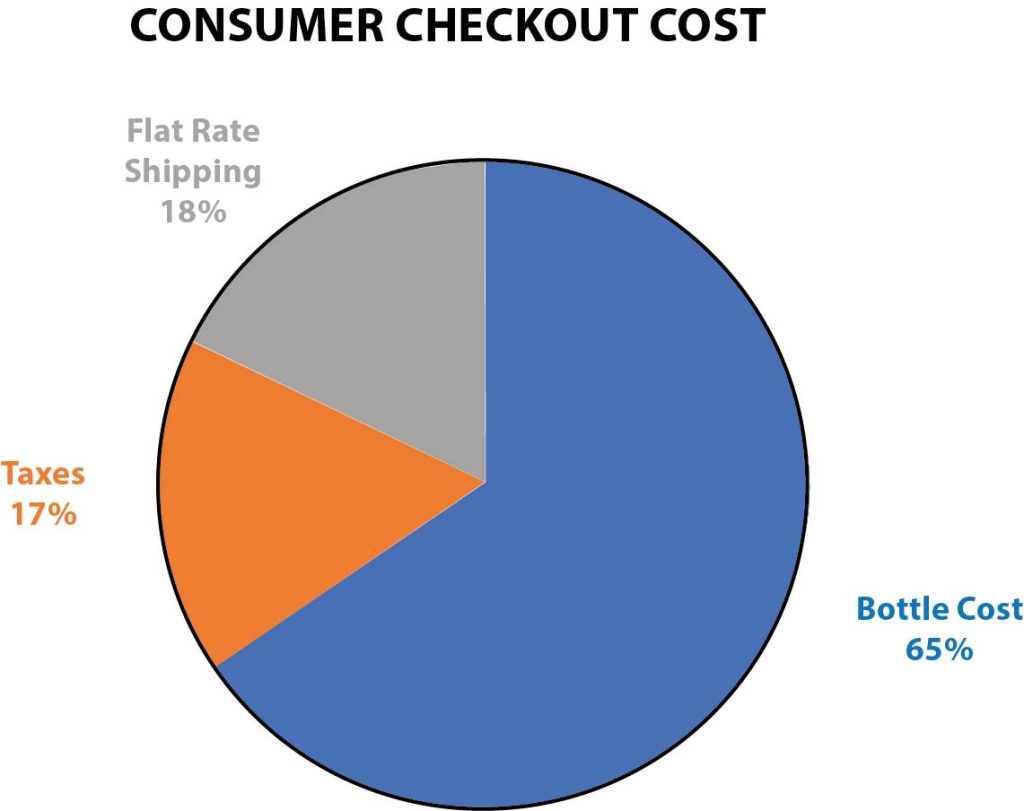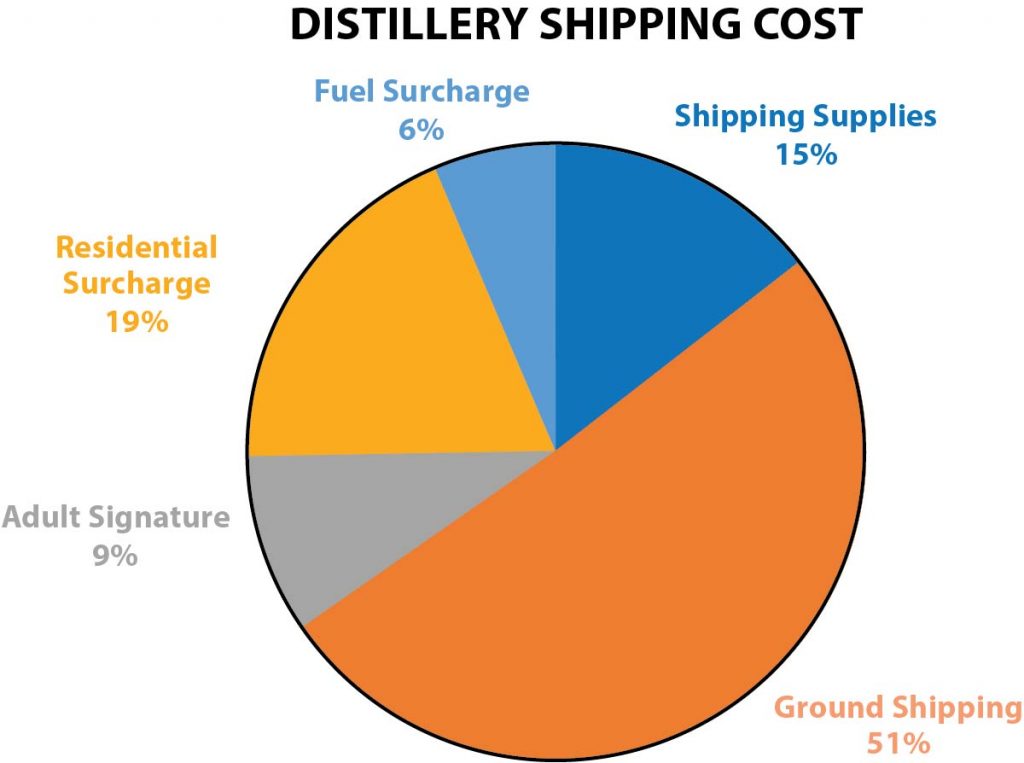Getting to Digital
Running a small business is challenging enough, and for craft distillers, the high regulatory burden only adds to that list of challenges to overcome as a result of outdated laws and regulations.
Over the last decade distilleries have exploded in growth, going from a few dozen to more than 3,200 in the US (craft distillers, craft blenders and more), and with more on the way. With each distillery producing at least few products, we are poised to hit saturation levels very similar to the wine industry. And with the growing number of spirits available on the shelf, consumers will often pick a brand that they have affinity toward rather than an unknown brand — in fact, 69% of surveyed Americans say they purchase alcohol brands they know and trust, so it’s more important than ever to build brand loyalty and trust through consumer education.
Post COVID, there was little to no traction in the direct-to-consumer (DTC) space, as most distilleries relied on the traditional three-tier system, tasting room, bars and restaurants for sales, in addition the steep regulatory hurdles that are required to ship spirits both in-state and out-of-state discouraged most distilleries from starting down that path.
During COVID, we saw a big shift in consumer behavior that was driven mostly by off-premise consumption and that made shipping spirits directly to consumers the only choice for some producers. And with a reported near 55% decline in sales for on-premise, DTC gained momentum for spirits.
When I started my distillery in 2016, I had the same dreams, fears, inspirations and goals that every entrepreneur that gets into this business all have in common. But I quickly realized that producing spirits was only part of the equation. Consumer education and omnichannel sales play an important role in the success strategy, but often is not the priority of a busy distillery that has a dedicated stream of revenue. And the statistics are even worse for smaller distilleries, with a reported 42% of producers having difficulty finding a wholesaler in their state. And the 69% that did have distribution reported that their wholesaler does not give their brands the necessary time and attention.
Entering DtC
My journey with DtC sales started with the idea of selling t-shirts to my customers, and in 2017 a dedicated e-commerce site was created to help.
As the months passed, I saw more signs that DtC was becoming more prevalent in the wine industry, so I started investigating how to collapse my now two different sites (one site being my main distillery, which was very static, and my second being my e-commerce for t-shirts that was more dynamic and allowed for checkout capabilities) to allow for both the sale of merchandise and alcohol.
And in 2018 with that direction in mind, I reached out to my local state Liquor Control Board (LCB) and ensured that direct to shipping is allowed for Washington State. Distilleries in WA state need to fill out an added activity form and get the sign off from LCB, and with one step closer, I started the migration of content from the old static site to the new e-commerce solution.
With my e-commerce store up and running, my next step was to figure out the logistics of getting the alcohol physically shipped.
So, I reached out to the two companies that can ship alcoholic beverages, FedEx and UPS. FedEx told me, after many conversations, they did not allow for the shipment of spirits, only wine. UPS on the other hand, after just a few initial talks and clarifications on the spirits policy, said they allowed it and we signed a contract.
UPS currently allows 11 states to ship directly to consumers from distilleries that are within the state boundary. These states are Alaska, Arizona, Hawaii, Kentucky, Nebraska, Nevada, New Hemisphere, North Dakota, Pennsylvania, Washington and Washington DC.
I also want to clarify that the main UPS alcohol guidance mentions no shipping of spirits for direct-to-consumer, but talking with my account representative and their compliance team they allowed it based on guidelines from the above states.
Shipping Costs
Shipping directly to consumers has a lot of benefits, including the ability to retain customer information — address, email, text, purchase history and even the referral that led to the sale.
In addition, DtC shipping offers the ability for distilleries to build brand awareness by directly interacting with customers, offering educational opportunities and discounts, resulting in word-of-mouth advertising — one of the best marketing tools available — building toward the critical mass and attention required to then be successful in the three tier system.
But success is not as simple as getting an e-commerce site with the hopes that you will start selling — it requires constant attention and understanding of consumer behaviors, cost of goods and the best shipping strategy that balances total cost for the consumer while off-setting your production and shipping.
Below is an example of a real-world break down of what it really costs to ship one bottle, from both sides of the transaction. Example 1 shows what the consumer would pay, and Example 2 what the distillery would pay for shipping that bottle to the consumer.

Example 1 — Consumer Side (1 Bottle)
In this example we showcase what the consumer sees, and ultimately will pay for during checkout, using flat rate shipping for a single bottle shipped. (Chart 1)
Bottle cost: $54.99
Taxes: $14.11
Flat Rate shipping: $15
Total consumer price during checkout: $84.10
As you can see the cost quickly goes up, and according to ShipCompliant, the reason that 68% of customers abandon their carts is due to high shipping costs.
Now let’s look at what it costs the distillery for shipping a single bottle.
Example 2 — Distillery Cost (1 Bottle)
From the distillery side, the costs can quickly escalate with fees we might not see until the final invoice is sent for payment. First, it is very important to have a good handle on your costs of goods (COGS) and how much it truly costs you to produce that bottle as it will help determine your shipping strategy. Below is a breakdown of the average costs to ship a single bottle in-state to a WA state resident. (Chart 2)
Packaging and shipping supplies: $3.40
Average interstate shipping (Ground): $15.35 (discounted: -$3.38, total: $11.97)
Adult signature: $6.70
(discounted: -$4.49, total: $2.21)
Residential surcharge: $4.45
Fuel surcharge: $2.12
(discounted: -$0.63, total: $1.49)
Total distillery shipping cost: $23.52
So as you can see we have a loss of $8.25 ($23.52 minus $15 for flat rate shipping) per shipment of a single bottle order. This number can be reduced if the customer purchases a larger number of bottles, or can be offset by doing real-time calculations during checkout and charge a more appropriate shipping cost, or perhaps have a higher flat-rate shipping cost.

But the real question remains, is the shipping price still too high, too low or just right? And with the “Amazon effect” — where consumers have come to expect free, fast shipping — one might argue all three points.
Next is the question of timing, as the package requires an adult signature, the consumer must be educated to know that they need to be present for a signature. During COVID, that was not something many wanted to do, but as we transition to the next phase, it is always best to include this message into your shipping confirmation emails and during checkout so the consumer is educated and aware of what to expect.
Finally, I want to mention that, although charging a flat rate is perhaps not the best solution, it’s a good start. And businesses must constantly assess spirit deliveries, cart abandonment, return packages and offer different tiers of shipping options, including free or low-cost shipping options as you work on optimizing and finding the right balance.
Platform and Supplier recommendations
Platform
Here are my suggestions for DtC shipping based purely on my experience and current setup.
For the e-commerce side I choose Shopify. Its an easy and powerful e-commerce platform that allows even for the novice user to get started with an online presence. Their basic plan starts at $30 per month and covers most of everything you need.
If you do choose this as your primary platform, I would also add a few recommendations that will make shipping spirits more compliant:
Block sales of alcohol outside of the states you are allowed and have a license to ship to. For me this means only Washington state at the moment, as I only have a license to ship directly to consumers within state borders. This can be easily done via the settings and shipping zones.
Create tax overrides for each of your products, that includes the full tax of the spirit, this allows you during checkout to precisely show customers the exact tax amount versus using the default Shopify tax codes that are set at a state level and might not reflect alcoholic beverages. An added bonus is that this helps with tax reporting on the backend.
Suppliers
For my shipping provider I opted for UPS, since as previously mentioned it was the only shipping provider that allowed shipping of spirits. The added benefit is that UPS.com offers platform integration with Shopify for pulling purchase orders automatically into your queue, thus reducing the need to upgrade to higher priced tier plans or added applications that would add cost to your bottom line.
From the packaging supplier side, I have a few options, which include Uline and WCP Solutions. Uline offers affordable pulp shipping containers that fit spirit bottles. WCP Solutions also offers similar shipping containers with the added benefit of having the Special Delivery Instructions that UPS requires printed right on the shipping box, thus reducing additional stickers on the containers.
[ Pro Tip: I’m currently using the Uline pulp containers that come in 1, 2, 3, 6 or 12 bottle packs. Individually if I were to order their 3-bottle bundle which includes trays + boxes it costs $192 for a 30 bundle, plus on average $45 to ship for a total cost of $237. When I order their trays separately and a common 19 x 13 x 6 box (that can fit 3 bottles), you can save over $100, thus passing those savings either to your consumers or your distillery. ]
Final thoughts
With any successful vertically integrated business, DtC shipping can be a core part of the overall revenue stream.
And it’s a must for distilleries to ensure we offer consumers convenient and affordable buying options to create a better opportunity for them to try our products at directly from the source. This will allow for larger margins, a closer relationship with our customers and ultimately with more data that distilleries can use to navigate wider distribution, product development and the shift to being successful in a digital e-commerce space. END
1 ttps://nielseniq.com/global/en/insights/2020/rebalancing-the-covid-19-effect-on-alcohol-sales/
2 https://distilling.com/distillermagazine/new-adi-survey-of-craft-distillers-shows-big-economic-impact-of-direct-to-consumer-shipping-of-spirits/
3 ttps://distilling.com/distillermagazine/new-adi-survey-of-craft-distillers-shows-big-economic-impact-of-direct-to-consumer-shipping-of-spirits/
4 ttps://dtcwinesymposium.com/wp-content/uploads/2016/01/4.-DTCWS-2016_FedExShipCompliant_Final.pdf








